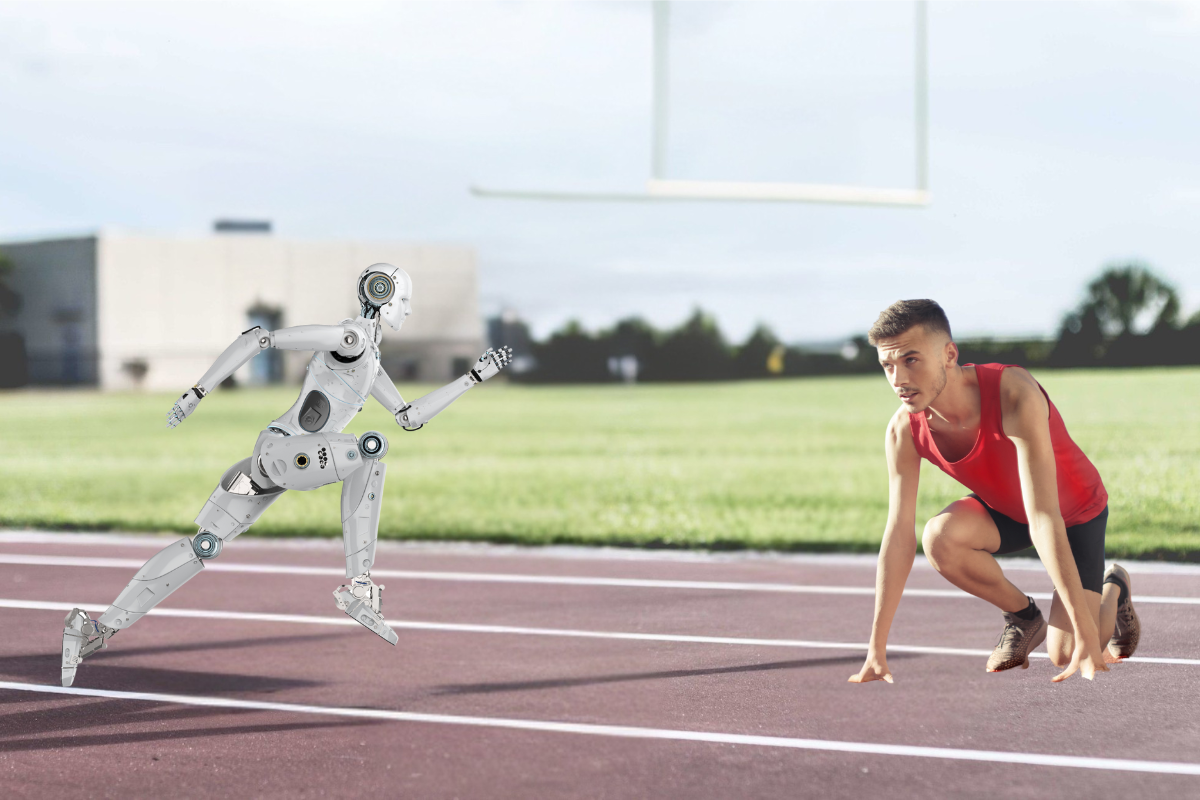
The future of robotics? One slow, unsteady step at a time. Credit: Canva
The Beijing marathon was not just a race—it was a line between science fiction and reality. It was lined up with people and humanoid robots. No, this is not a Black Mirror episode. This is Beijing 2025, and man vs machine has just become a literal footrace. As the announcers counted down, humans stood shoulder to shoulder with their robot counterparts, and then they were off. Kind of.
The World’s First Cyborg Race
On 19 April 2025, Beijing hosted the world’s first marathon featuring humans and humanoid robots. Over 12,000 people ran the Beijing E-Town Half Marathon. This year, they shared the race with 21 humanoid robots. It is not delivery bots or metal mascots, but actual bipedal machines that are built to walk, and yes, they had to finish a 21.1km race within the official time limit. The fastest human to cross the finish line was in an hour.
And how did the robots fare? The top-performing robot, a lanky machine named “Tiangong Ultra,” took around 2 hours and 40 minutes. The robots were developed by the Beijing Innovation Center of Human Robotics, They used long legs and algorithms to mimic our human stride patterns.
When Robots Meet Reality
While “Tiangong Ultra,” made the headlines, most of the other robots had a tougher time. Some fell before the crossed the start line— one bot in particular face planted and lay motionless for a few minutes before rebooting. Others drifted off course, bumped into barriers, and froze mid-step when the terrain changed. More than once, the race staff intervened to replace drained batteries. How did this chaos look to the audience? It was equal parts technological marvel and slapstick theatre. Yet this event revealed something more profound.
A global pattern
This event alone does not prove how far robots have come. It shows that we still need the eye of perfection from them, and how surprising it is when it closely resembles us. We fear automation because we expect that it is flawless. This race serves as a reminder that it’s not, not yet, that is. Robots can mimic movement and process data, but are still learning about stability on the ground, both socially and literally. The implications go far beyond the sport. It is a test of robotics in spaces we occupy, such as Healthcare, construction, transport, and emergency responses. One thing is to balance on a lab treadmill, and another to run through the streets without bumping into a cyclist.
The Beijing marathon is not the only isolated case in robotics. It is part of a growing trend of technology being deployed in unpredictable human spaces. In recent years, Spot, a four-legged robot, has been designed to be deployed in earthquake rubble zones and hazmat areas, offering rescue crews a better tool to combat risky missions. Italy’s robot firefighter, engineers tested firefighting robots in Venice’s flood-prone infrastructure, and again, the key variable was not the fire, but the unpredictability in century-old buildings, rising water, and the opposite of lab-coined conditions.
Progress In Steps
This was not just a stunt to grab a headline. But rather an experiment within real-world robotics. The race environment itself was introduced to what labs could never simulate: uneven ground, crowd noise, changing light, and weather unpredictability. So, the conditions that tested them had nothing to do with code but adaptation. The marathon marks a symbolic shift and not just in sports tech. But how we are starting to test robotics in everyday life. From caregiving to construction, the robots will increasingly appear in our everyday spaces (Just like I, Robot).
The Beijing event didn’t prove that they could run. It showed that they try, and that is what is meaningful. We are often told that robots are coming for our jobs, our streets, and our lives. But if Beijing’s half marathon showed anything, it’s that the future is coming, occasionally stopping for battery packs, and temporarily lying on the pavement. In that clumsy, very human way– it’s making progress.







